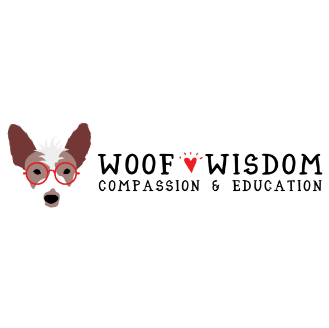Walking your dog can be a highlight of your day—or it can be an exercise in frustration. Some of us love walking our dogs, while others dread it, especially when our companions turn into relentless pullers. For now, let’s set aside the dogs with “big feelings” who lunge, spin, and bark on leash—we’ll cover them in a future post. This is for the everyday pullers, the ones who make you think, “Wow, this isn't really fun for me,” as Fluffy pulls your arm out of its socket or Bowser nearly drags you to the ground.
Let’s break this down and explore why dogs pull and why we don't pull back.

Dogs Have Four Legs, We Have Two
First, let’s talk logistics. Dogs naturally move faster than we do—they’ve got four legs to our two, after all so moving forward at a quicker pace is pretty much a guarantee.
While we might view a walk as a chance to unwind after a long day, our dogs most likely have been home with little to no stimulation and the walk is their first opportunity to burn off pent-up energy.
Sometimes we might get a young dog or a high energy breed in hopes that they will get us out of the house more, but instead it is hard for us to get their needs met. If there’s a mismatch between your energy levels and your dog’s, consider giving them some pre-walk exercise to take the edge off. A quick game of tug, fetch, or flirt pole before heading out can make the walk more enjoyable for both of you.
Have You Taught Them Not to Pull?
Here’s a tough question: Did you ever truly teach your dog how to walk without pulling? Expecting them to learn this skill in the middle of a walk (where their needs haven't already been met - see above) is like trying to teach someone to drive while speeding down the highway. It’s not fair to either of you and it's a recipe for frustration on both ends of the leash. Instead, take the time to practice leash skills in a controlled environment (start in your living room) before leveling up, like a video game to the yard and then hitting the streets.
Also, keep in mind that if your dog has already been pulling on walks for years and you’ve been moving forward anyway, you’ve reinforced the pulling aka you've been teaching them that "yes indeed by pulling this is exactly how you move us forward". If you suddenly change the rules, it’s not fair to expect them to adapt immediately without some guidance and patience.

Gear Matters
There’s no shortage of anti-pull devices on the market, but many of them work by suppressing behavior through discomfort or pain. While these tools might make your walk more pleasant in the short term, they can have long-term consequences for your dog’s physical and emotional health. Make sure you understand that fully before you reach for that quick fix, things that seem like a "miracle cure" can create years of problems ahead.
I’m a big fan of harnesses (I'm sure no surprise there) but not all harnesses, and some of them are down right terrible and pretty hard on your dogs body (I use flat collars too). If you need help picking out the right one just ask Kristine@mywoofwisdom.com
My favorite myth I often hear is “harnesses teach dogs to pull.” Honestly it's hard to keep a straight face with this one. This argument usually comes from people advocating for tools that cause discomfort, but it’s simply not true. Harnesses just do not inhibit movement, they prioritize your dog’s comfort and natural movement and rely on you training your dog. So yes if you put a harness on your dog that does not inhibit movement, but prioritizes musculoskeletal health and you do not invest any time in teaching your dog how to walk on a loose leash you will get pulling. This is because the people making these claims rely on the discomfort of the gear to do the work.
Think about it, if you were in an accident and your dog was seat-belted in what type of equipment would you want on their body?
Sniffing, Excitement, Anxiety, oh my!
Along with all the above there are so many more reasons that your dog might be pulling on leash.
There will be more on the Dog Blog to take a deeper dive into each on of these rich topics but there is just never one reason, one answer, and never a one size fits all plan for you or for your companion. If you need help and want to talk about your struggles make sure to reach out, I am here to help support you and your companion through it all. You guys have got this!
Setting Up for Success
Ultimately, walking your dog is about teamwork. Here are some key takeaways to make the experience better for both of you:
Choose a dog that matches your lifestyle: If you’re not an active person, a young, high-drive breed might not be the best fit.
Meet their needs: Provide exercise and enrichment before and beyond the walk itself.
Teach skills in a controlled environment: Practice leash manners at home or in a quiet area before expecting perfect behavior on a busy street.
Be patient: Neither of you is perfect. Give yourselves grace to learn and improve as a team.
Seek professional help if needed: A group class or private training session can make a world of difference.
When you approach walks with empathy and a willingness to adapt, you’ll find they become more enjoyable for both you and your dog. Pulling back doesn’t set either of you up for success, it doesn't teach either of you what to do and it continues the cycle of frustration between you and your best friend. Remember: When your dog pulls, don't pull back.

Comments